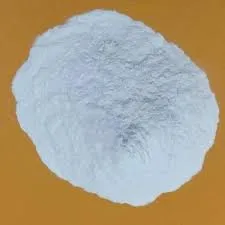
Nov . 07, 2024 19:32 Back to list
Exploring the Applications and Benefits of Hydroxyethyl Cellulose in Various Industries
Understanding Hydroxyethyl Cellulose (HEC) Properties, Applications, and Benefits
Hydroxyethyl cellulose (HEC) is a non-ionic water-soluble cellulose ether. It is derived from cellulose, a natural polymer found in the cell walls of plants. HEC is produced by reacting cellulose with ethylene oxide, a process that introduces hydroxyethyl groups into the cellulose structure. This modification significantly enhances the solubility of cellulose in water, making HEC a versatile ingredient with a myriad of applications across various industries.
Chemical Properties of HEC
HEC is characterized by its unique molecular structure that grants it specific properties. The introduction of hydroxyethyl groups increases the hydrophilicity of the cellulose, allowing it to dissolve easily in cold and hot water. The viscosity of HEC solutions can be modified by adjusting its concentration and molecular weight, providing formulators with flexibility in creating products with specific texture and thickness.
In addition to its solubility and rheological properties, HEC is stable across various pH levels and temperature ranges, making it an ideal additive in diverse formulations. Its low toxicity and non-ionic nature mean it does not react with ionic materials, which can be particularly beneficial in formulations containing surfactants or other active ingredients.
Applications of HEC
HEC finds extensive use across multiple industries, including
1. Personal Care and Cosmetics HEC is commonly used in skincare products, shampoos, and lotions as a thickener and stabilizer. Its ability to form gels and emulsions helps provide a desirable texture and stability in products. Furthermore, HEC contributes to the smooth application and spreadability of cosmetics on the skin.
2. Pharmaceuticals In the pharmaceutical industry, HEC serves as a key excipient in formulations like gels, creams, and ointments. Its ability to enhance drug delivery and improve the viscosity of topical formulations makes it an essential component in many medicinal products.
3. Food Industry Although it is not as common as other food thickeners, HEC can be found in certain food applications where stabilizing and thickening agents are needed. It can enhance the mouthfeel and texture of various food products.
4. Construction and Building Materials HEC is used in the formulation of adhesives, sealants, and paints. Its ability to improve the workability and consistency of these materials ensures better application and performance. Moreover, HEC helps to control water retention during the drying process, which is crucial for achieving the desired properties in construction materials.
hydroxyethyl cellulose hec

5. Agriculture In agriculture, HEC is sometimes used as a coating agent for seeds and fertilizers. It aids in the controlled release of nutrients and protects seeds from environmental stress.
Benefits of HEC
The adoption of hydroxyethyl cellulose in various formulations brings numerous benefits
- Versatility HEC can be used across multiple sectors, including personal care, pharmaceuticals, food, and construction.
- Rheological Control The ability to manipulate the viscosity of HEC solutions allows manufacturers to create products with specific flow characteristics, enhancing usability and performance.
- Stability HEC exhibits excellent stability in a wide range of conditions, ensuring that formulations maintain their desired properties over time.
- Safety With a low toxicity profile, HEC is generally regarded as safe for use in consumer products, aligning with the increasing consumer demand for safer and more natural ingredients.
- Environmental Friendliness As a derivative of natural cellulose, HEC is biodegradable and can be considered an environmentally-friendly alternative to synthetic thickeners.
Conclusion
Hydroxyethyl cellulose is a valuable polymer that has gained significance in various industries due to its unique properties and versatility. From enhancing the texture of personal care products to contributing to the performance of construction materials, HEC plays a crucial role in product formulation. With advancements in technology and growing awareness of sustainable ingredients, the demand for HEC is likely to continue expanding. As industries increasingly prioritize safety and environmental considerations, hydroxyethyl cellulose stands out as a reliable and effective choice for a wide range of applications.
-
Versatile Hpmc Uses in Different Industries
NewsJun.19,2025
-
Redispersible Powder's Role in Enhancing Durability of Construction Products
NewsJun.19,2025
-
Hydroxyethyl Cellulose Applications Driving Green Industrial Processes
NewsJun.19,2025
-
Exploring Different Redispersible Polymer Powder
NewsJun.19,2025
-
Choosing the Right Mortar Bonding Agent
NewsJun.19,2025
-
Applications and Significance of China Hpmc in Modern Industries
NewsJun.19,2025







